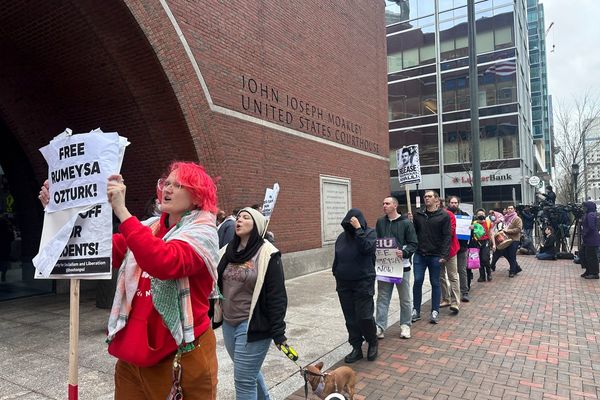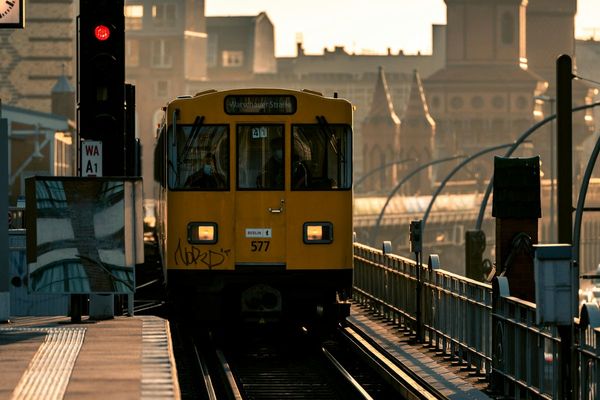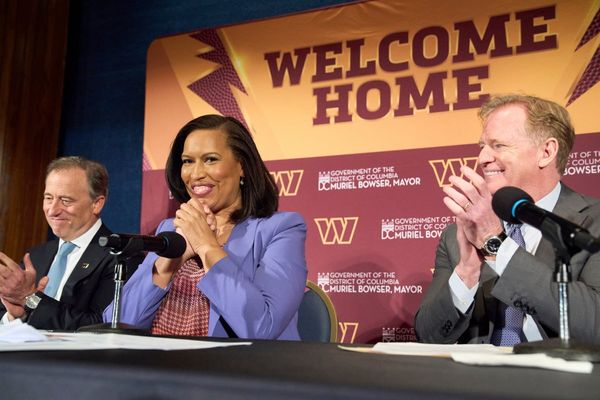
The alternative prime minister boldly declared the 2025 federal election was a “sliding doors moment” for the nation.
Peter Dutton’s budget reply speech on Thursday evening was filled with facts and figures to paint Labor as hopeless at managing Australia’s best interests.
But how well do Dutton’s claims stack up?
‘The worst collapse in living standards’
Perhaps the standout claim from the opposition leader on Thursday was that Australia had “experienced the longest household recession and the worst collapse in living standards in our country’s history”.
On Friday morning he repeated: “Australia’s had the biggest fall in living standards in the developed world.”
The economist Saul Eslake says the best single measure of living standards is real household disposable income per capita.
That figure, derived from the national accounts, fell by about 10% between its “somewhat inflated” peak in September 2021 and June 2024.
It is the largest fall in the history of the data stretching back to 1959, and worse than in comparable countries such as Canada, New Zealand and the US.
“But a significant proportion of that happened in the quarters under the former government,” Eslake says.
Housing and groceries
Dutton made further claims about the cost of housing and domestic bills.
“Here’s the facts of the Albanese government’s economic record,” he told parliament in his budget reply speech. “Rents are up by 18% Housing is up by 14%. Groceries up by a staggering 30%.”
According to the Australian Bureau of Statistics, rents did rise by 18% between the March quarter in 2022 and December quarter in 2024.
House prices have risen 6.5% nationally since May 2022, according to CoreLogic, and units 5.1%.
On grocery prices, Dutton appears to have taken the 30% figure from a Daily Telegraph secret shopping study in March. The ABS puts the increase in food costs at about 14% with only fats and oils surpassing the 30% increase mark.
Power bills
Dutton said Australia has some of the highest power prices in the world. Specifically, that electricity was “up by 32%” this term despite Labor promising an average reduction of $275 per household, and that gas bills had increased by up to 43%. He blamed “Anthony Albanese and Chris Bowen’s reckless renewables-only policy train wreck”.
Electricity and gas bills did rise significantly shortly after Labor was elected, but the experts say the hike was mostly not due to the rollout of solar and windfarms. It was largely due to a rise in fossil fuel prices after Russia invaded Ukraine, and to a quarter of the country’s coal plants being offline during winter.
ABS stats show electricity bills have actually fallen 10% between the March 2022 quarter and the December 2024 quarter, largely due to a series of government subsidies. The ABS indicates power bills in the December quarter would have been almost 50% higher but for billions of dollars in federal and state government rebates.
Gas prices are up by 31% in the 33-month period, according to the ABS.
Experts have said it is very likely the rises would have happened whoever was in government.
It’s worth also noting Labor’s policy is not “renewables only” – it is renewable energy backed by “firming” from batteries, pumped hydro and fast-start gas plants.
Health
Dutton claims bulk-billing availability has fallen by 11 percentage points, resulting in 41m fewer bulk-billing claims.
“On this government’s watch, bulk billing nationally has fallen by 11%. There’s 41m fewer bulk-billing episodes with GP services under this government, and more than 270 GP practices have closed under this government’s watch,” he said.
“Australians should never have to choose between seeing a doctor or paying their bills.”
The Australian Institute of Health and Welfare says the bulk-billing rate peaked in 2020 and 2021 at 89% after the Morrison government doubled the bulk-billing incentive for six months and required bulk-billing be applied to a number of services.
In 2022 it fell back to 85% before dropping to 77% in 2023 and 78% for the first 10 months of 2024.
Between 2021 and 2024 the fall was 11 percentage points, but that includes more than a year under the Morrison government.
Is a flood of migrants driving up houses prices?
Dutton claimed a million people came through Australia’s migration program in the Albanese government’s first two years in government – which, he said, amounted to 70% more migrants than in any two-year period in the country’s history.
Analysis of the figures suggests that’s broadly accurate, although the ABS migration figures stretch back only as far as 1981.
The opposition leader also linked these figures to the cost of housing.
“Australians are generous and welcoming people, but they want migration to be sustainable and the government to be in control of it. Labor is neither in control of migration, nor has it kept migration at sustainable levels, and Australians know it,” he said.
High migration levels do have an effect on house prices, but it’s not the primary driver as Dutton has suggested.
The population is no larger now than it was expected to be before the pandemic. In other words, an unusually large rise in housing costs has not been matched by an unusually large rise in the population.
Dutton also said Labor’s housing policies had not delivered a single new home.
It’s true that no new houses have been built from scratch under the $10bn Housing Australia Future Fund, although a number have been acquired or renovated to an acceptable living standard where they were not before.
Under the $2bn Social Housing Accelerator, 402 social housing dwellings have been completed across the country, including some from scratch, but the majority have also been acquired and refurbished.
A ‘national gas emergency’?
Dutton said Labor had “created a national gas emergency due to insufficient supply” and as a result the country was facing “blackouts and brownouts” and energy rationing. He said the Coalition would create a gas reservation policy that would require gas companies to supply an extra 10-20% of gas locally, rather than export it.
Australia does not have a gas emergency. The Australian Energy Market Operator (Aemo) has said it expects an annual shortage in southern states from 2029 – later than previously forecast – unless more supply is found. Some steps are being taken to address it. Aemo proposed new production, new gas storage facilities and short-term liquefied natural gas (LNG) terminals. Analysts have suggested an additional option: doing more to cut gas demand by replacing it where possible with renewable electricity.
The potential medium-term gas shortfall is not putting the national electricity grid at risk of blackouts and brownouts. Relatively little gas is used in the national grid supplying the eastern states – it provided only 5.2% of generation in the past year – and the reliability of the system has remained within the target band. When concern about potential shortages has been raised on particular days it has mostly been due to old coal plants being offline.
Aemo has suggested there could be reliability issues if all proposed new renewable generation is not built roughly within the proposed timeframe. Labor has taken steps to accelerate the rollout – the Coalition has said it would slow it.
Few details were available about the Coalition’s gas reservation policy, but it is worth noting that its rationale that Australians are using more gas – as claimed by the resources spokesperson, Susan McDonald – is not backed by data. The Institute for Energy Economics and Financial Analysis found gas demand in eastern Australia, not counting that used for LNG exports, had fallen 32% since peaking in 2012-13.
Rewiring the Nation
Dutton said the Coalition would “end the reckless $20bn Rewiring the Nation Fund” and stop the rollout of 28,000km of new transmission lines under Labor.
That will be difficult as $16.75bn of the funding has already been allocated to the states and territories, including transmission links to the Snowy Hydro 2.0 project and Marinus Link to Tasmania, both of which have had Coalition support. Rather than 28,000km, Labor says it is planning about 10,000km of new or strengthened transmission lines, consistent with what Aemo calls a “step change scenario” in the grid. About 4,500km has to be built by 2030.
The funding for Rewiring the Nation is not a direct cost on the federal budget. The Clean Energy Finance Corporation manages it as a series of loans issued at below market rates. The loans are designed make the government a profit.







